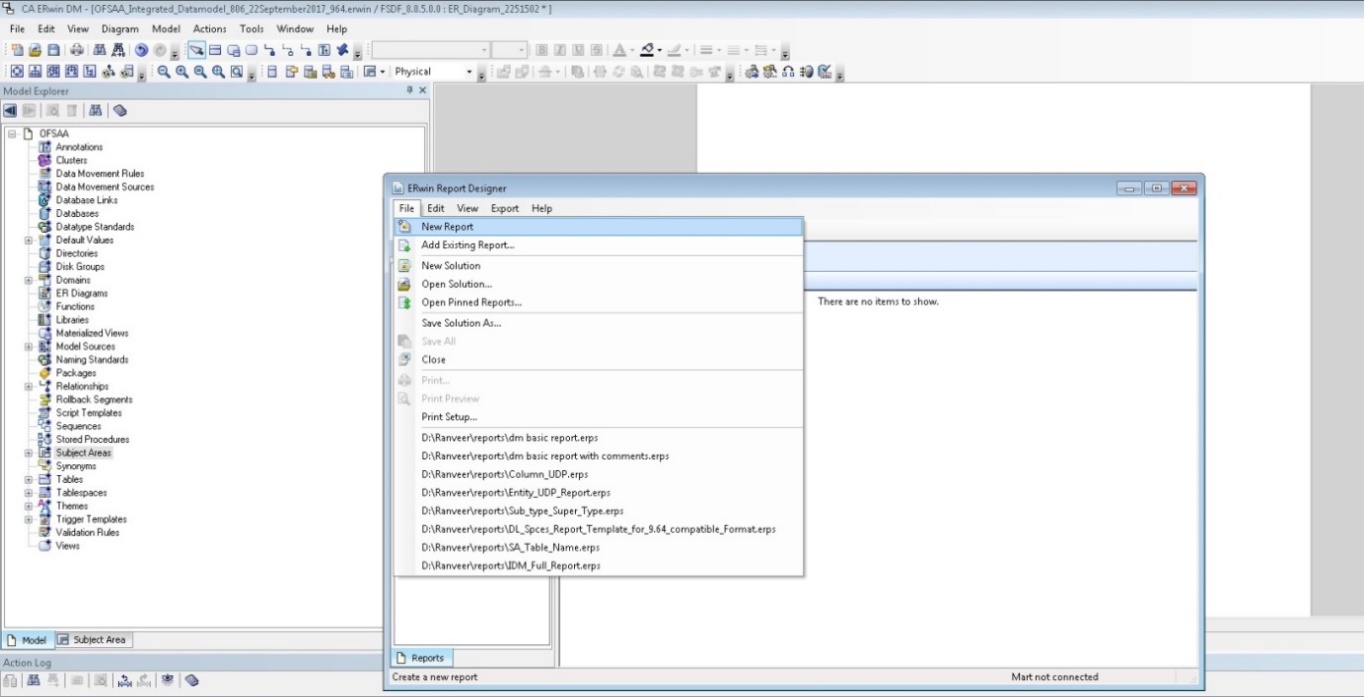

It becomes a nightmare for the senior data modeler to bring them together, especially when it comes to recreating them when you want to merge them. It has become a pain point to merge the models from individual desktops and get them into a single data model, when multiple data modelers are working on a particular project. We are planning to move, in 2021, into their server version, where multiple data modelers can work at the same time and share their models. Also, if erwin could bring in the definitions as part of the NSM and into a model, then we could use those definitions on entities and attributes. However, it would be nice if we could have more than one NSM entry with the same logical element name based on importance or usage. On the Naming Standards (NSM) side of things, there is a way in erwin to translate logical names into physical names based on our business dictionary that we created. We strongly believe this is something that should be enabled by default. On the Forward Engineering side of things, by default, the alter syntax is not enabled when creating alter scripts. If they can be set up to work better, that would help. Alter scripts can be troublesome to work with at times. If we had a better way to connect and reverse engineer the databases into data models, that would help us. On the client side, there are some features that would come in handy for us, e.g., Google Cloud Platform support or support for some of the other cloud databases. This would be less of a problem if the mart administrator did not have trouble displaying all of the sessions. This way we can focus on seeing which users have been utilizing our central repository recently, as opposed to seeing all of what happened since five years ago. E.g., a way to automatically remove inactive sessions older than a specified date. There are several Mart features that could be added. If this process could somehow be automated, having erwin detect when a model is corrupted and do this process on its own, that would be helpful. There is a fix that we run to repair this corruption by saving the model as an XML file or to the Complete Compare tool. We encounter model corruption over time, and it is one of those things that happens. If those were fixed, that would be a nice improvement. Otherwise browsing through the Mart, trying to open up or save a data model takes unusually long. Similarly, for Mart's performance, we need to reindex the database indexes periodically. Currently, in some cases, when we delete entities it causes the program to crash.

The client performance could be improved. We would probably use the tool more often if the Complete Compare were easier to use. If it could be redesigned to a degree where it is easier to use when we bring things over from one site to another and be sure that it's been done correctly, that would be nice to have. Therefore, it's hard to tell at times if Complete Compare is working as intended without having to manually go into the details and check everything. This is despite the fact that we are clicking to bring objects from one place to another. Complete Compare is set up only to compare properties that are of interest to us, but some of the differences cannot be brought over from one version of the model to another. We are unable to find the exported files in our workstations at times. For example, the save known changes as snapshot does not work as expected. McGeachie explains how each tool performs in the separation of logical and physical data views, as well as in the traceability of the links between the models, and provides his recommendations.Complete Compare is not user-friendly. Merging selected parts of LDM into ELDM.Generating, updating, and denormalizing PDMs.In this whitepaper, you’ll learn how ER/Studio and erwin Data Modeler compare when building databases using two distinct approaches – Silo Design and Enterprise Logical Data Model (ELDM)-Driven Modeling – and how they perform when: With a focus on support for top-down data modeling, McGeachie provides an in-depth examination of the process of creating several models with each tool, walking the reader through the capabilities and limitations of each. George McGeachie, an independent expert in modeling and metadata with more than 30 years of experience, assesses Idera ER/Studio and erwin Data Modeler Standard Edition in this first-of-its-kind whitepaper.


 0 kommentar(er)
0 kommentar(er)
